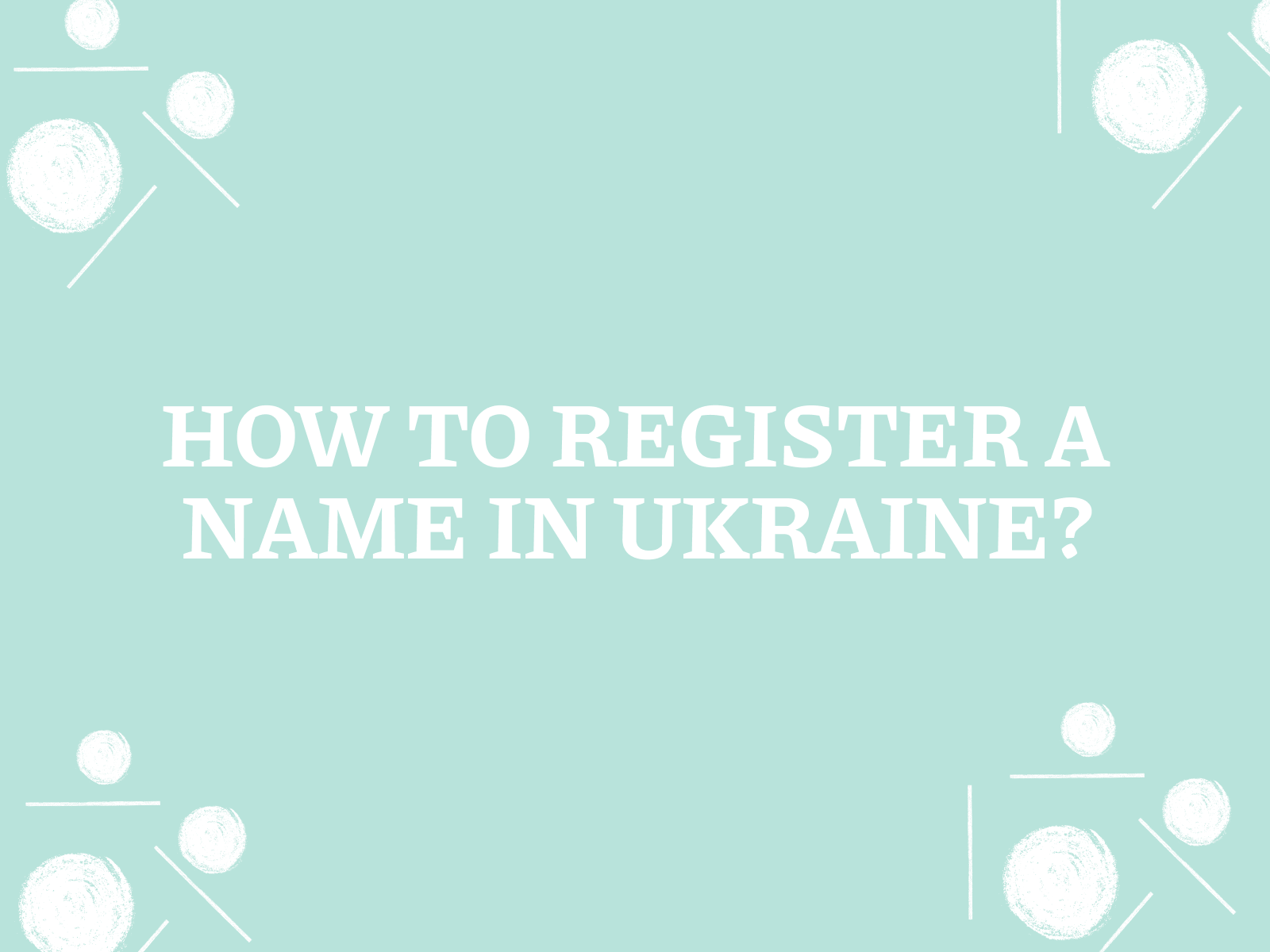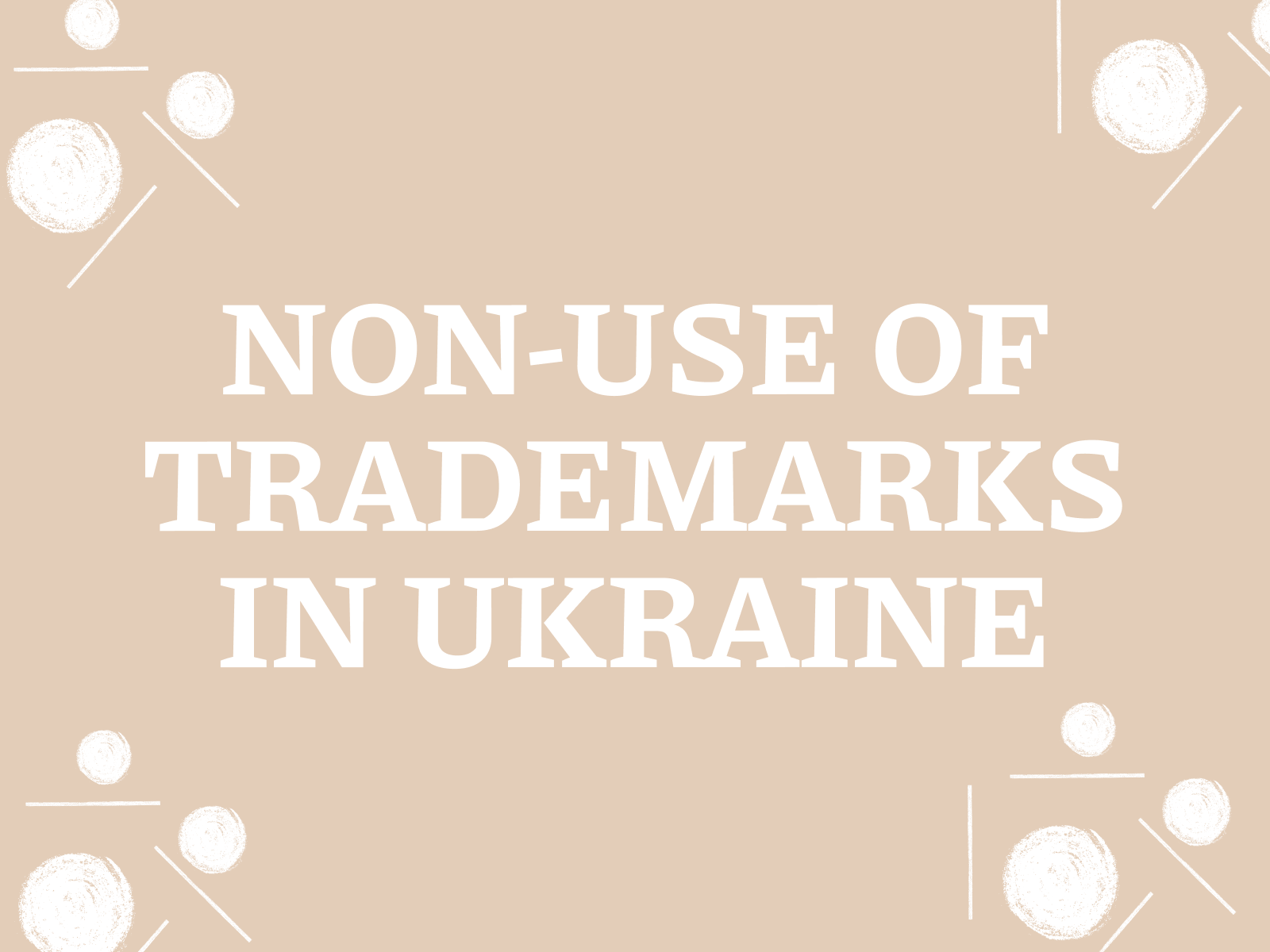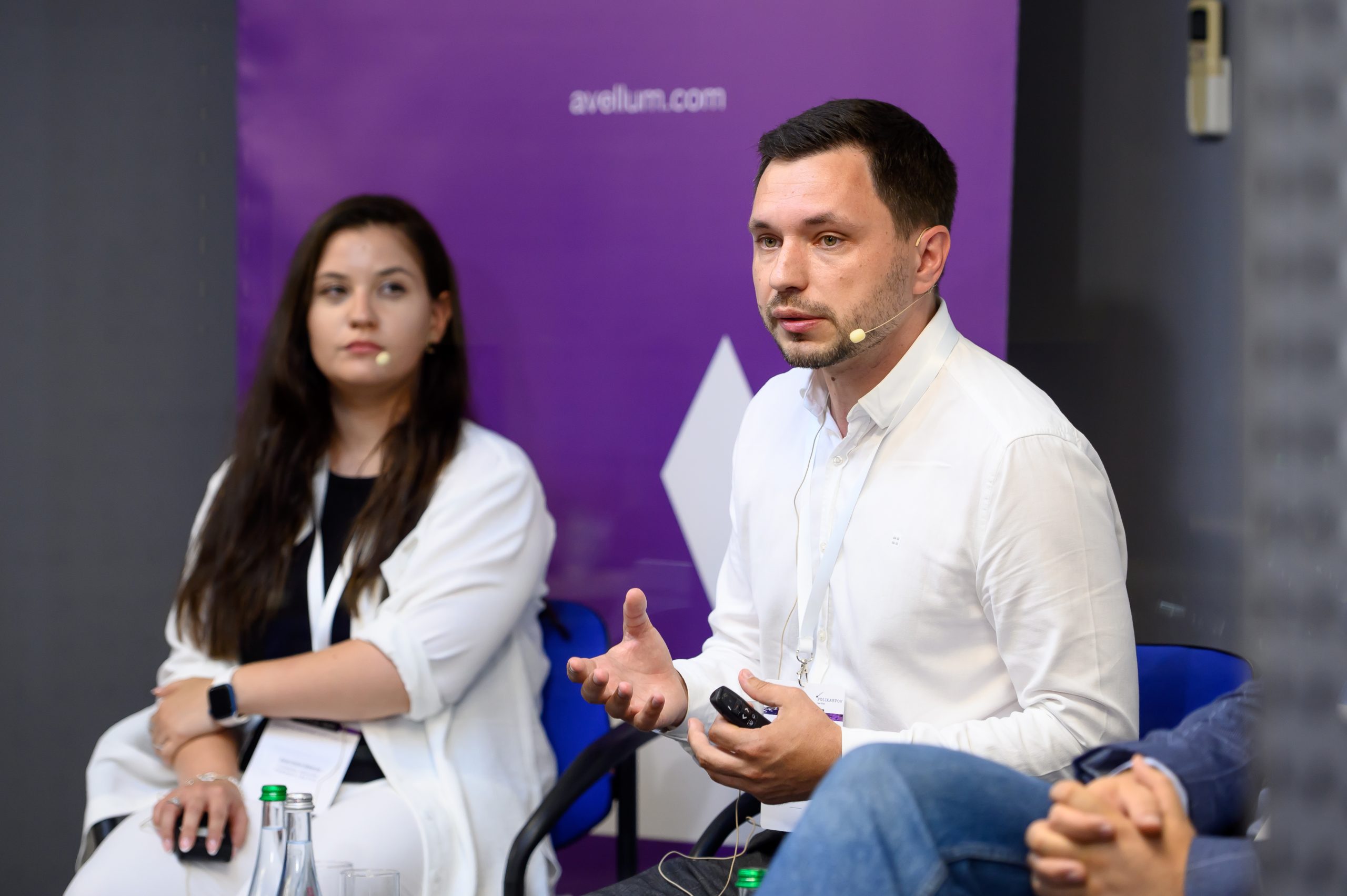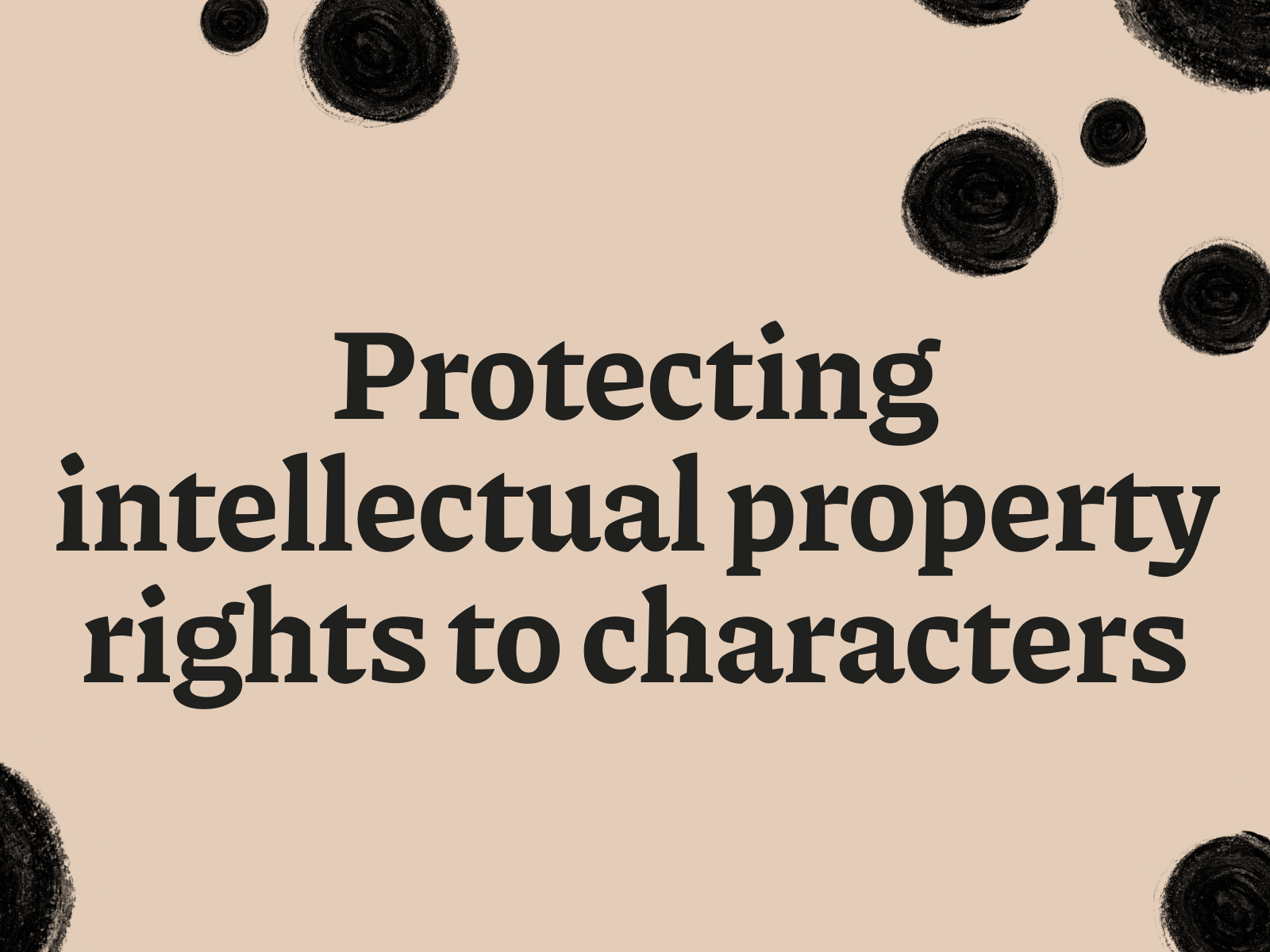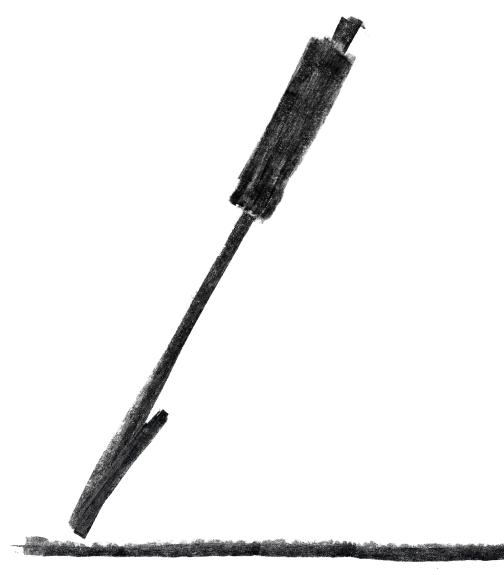Introduction.
In the age of digital technology and fierce competition, your brand is your main weapon. And like any powerful weapon, it needs to be protected. One of the key elements of a brand that needs to be protected is its name. Patenting the name is not just a fashion fad, but a necessity for any business that wants to establish itself in the market and avoid unfair competition. Legal protection of a name, namely trademark registration, gives you the exclusive right to use it for your goods and services, protecting your business from counterfeiting and copying.
Section 1: What is a name patent?
Before we dive into the details of the process of registering and protecting your business name, let’s find out what exactly is meant by the term “name patent” and whether it exists in Ukrainian law at all. To get a name patent – this phrase, although often used in colloquial speech, does not quite correctly reflect the legal essence of the issue.
1.1 Is it possible to patent a name? Debunking the myth of the name “patent” and explaining the concept of a trade mark.
In fact, a “name patent” is more of a colloquial term. In legal terms, there is no such thing. Patenting as such is intended to protect inventions, utility models and industrial designs. However, the name of your business, product or service is protected by another intellectual property object – a trademark.
A trademark (TM) is a designation by which consumers identify your products and services among others. It can be:
- A verbal designation: the brand name itself, a company slogan, a unique combination of words.
- Graphic representation: a logo, trademark, symbol.
- Three-dimensional designation: a unique shape of a product or packaging.
- Sound: a melody or sound associated with a brand.
- Combined mark: a combination of any of the above elements.
Registration of a trademark gives you the exclusive right to use this designation in your commercial activities and prohibits others from using identical or similar designations for similar goods or services without your permission. This is the protection that is often mistakenly referred to as a “trade dress patent”.
So, if you want to protect your business name, you need to register it as a trademark rather than obtain a patent.
1.2 What can be registered as a trade mark: Description of the types of signs that can be registered as a trade mark (verbal, graphic, combined)
As mentioned above, atrade mark can be represented in different forms:
- Verbal trademarks: This is the most common type, covering everything that can be pronounced – individual words, phrases, names, company slogans.
For example, a word trademark can be the name of the Aroma Kava coffee shop chain or the slogan of an online store “Buy with us!”.
- Graphic trademarks: This type of trade mark includes any images – logos, trademarks, symbols, even special packaging design.
Imagine the image of a goldfish on a package of aquarium fish food or a stylised letter “A” on an art gallery sign – these are all graphic trademarks.
- Combined trademarks: As the name suggests, this type combines elements of the first two – verbal and graphic.
For example, the logo of a pizza chain, where the company name is written in a special font and complemented by an image of a smiling chef with a pizza.
- Other types of trademarks: Although much less common, the law allows for the registration of other, more non-standard types of trademarks:
- Three-dimensional: the shape of a product or packaging that clearly distinguishes it from others (for example, an unusually shaped bottle of wine).
- Sound: melodies or sound signals that consumers strongly associate with a particular brand (for example, the sound of a game console being switched on).
The main condition for registering any designation as a trademark is that it must clearly indicate a particular manufacturer or seller of goods or services, distinguishing it from competitors.
Section 2: The process of registering a trade mark in Ukraine
So, you have decided what you want to register as a trademark – a company name, a logo or a combination of both. The next step is to get acquainted with the procedure for registering a trademark in Ukraine. Although this process may seem complicated at first glance, it is actually quite clear and straightforward. Especially if you understand the main stages and requirements in advance.
2.1 Step-by-step instructions: A detailed description of the steps of trademark registration: from filing an application to obtaining a certificate
The trademark registration process in Ukraine can be divided into the following key stages:
Stage 1. Search for identical or similar trademarks.
Before filing an application, it is important to make sure that an identical or similar trademark is not already registered or filed for registration for homogeneous goods or services. This will help to avoid refusal of registration and unnecessary expenses. You can conduct a search yourself in open registers or by contacting a patent attorney.
Stage 2. Preparing and filing an application for trademark registration.
An application for trademark registration is filed with the Ukrainian National Intellectual Property Authority (UNIPO). The application must contain a clear designation of the trademark to be registered as a TM, a list of goods and/or services for which the TM will be used, as well as other necessary documents and information about the applicant.
Stage 3. Formal examination of the application.
At this stage, the examiners of the Ukrainian National Research Institute check the application for compliance with the formal requirements. If any deficiencies are found, the applicant is given time to eliminate them.
Stage 4. Qualification examination of the application.
After successful completion of the formal examination, the application undergoes a qualification examination – a thorough check for grounds for refusal of registration. Experts evaluate the TM for its compliance with the requirements of the law and the presence of similar or identical trademarks already registered or filed for registration.
Stage 5. Publication of information about the application in the official bulletin.
If the results of the examination do not reveal any obstacles to registration, the information about the application is published in the official bulletin of the Ukrainian Trademark and Trademark Association. From this moment on, third parties have the opportunity to challenge the registration of your TM.
Stage 6. Trademark registration and issuance of a certificate.
If all the previous stages are successfully completed, the trademark is registered and the applicant is issued a certificate. A certificate is a document that confirms your exclusive rights to a trademark in Ukraine.
The trademark certificate is valid for 10 years from the date of filing the application. It can be renewed repeatedly for each subsequent 10 years by paying state fees in time.
2.2 Cost and terms of registration: Information on state fees and application processing time
Protecting intellectual property is not a free pleasure. Registration of a trademark, like any legally significant procedure, requires certain costs. But, believe me, these investments in the future of your business are more than paid for by the peace of mind and confidence you gain by becoming the sole owner of the rights to your brand.
So, what exactly are the costs you will face?
Firstly, there are the state fees that are paid directly to the USPTO at each stage of the registration process. Their amount depends on two main factors:
- Type of trademark: registration of a verbal designation (e.g. a name) will cost less than registration of a logo or a combined trademark.
- Number of classes of the Nice Classification: The International Classification of Goods and Services (ICGS) divides all products and services into 45 classes. The more classes you specify in your application, the more expensive the registration will be.
To find out the exact amount of state fees for your particular case, it is best to contact a specialist or visit the website of the Ukrainian National Patent and Trademark Office, where information on tariffs is regularly updated.
Secondly, if you do not want to understand all the intricacies of the registration process on your own, you should use the services of a patent attorney. The cost of the services of lawyers specialising in intellectual property matters in Ukraine starts at UAH 5,000 . Of course, the price may vary depending on the complexity of the task, the number of classes of the Nice Classification, urgency and other factors.
Finally, time is also a resource that needs to be taken into account. The average duration of the trademark registration process in Ukraine is from 18 to 22 months. Of course, there are cases when the registration process is faster, but sometimes it can take longer – it all depends on the circumstances of a particular case and the workload of the UIPI experts.
Despite the expectations and costs, protecting your brand is an extremely important step. After all, documents for trademark registration are not just pieces of paper, but a guarantee of your peace of mind and protection from unscrupulous competitors for many years.
Section 3: The role of a lawyer in trademark registration
Although Ukrainian law allows you to deal with intellectual property issues on your own, registering a trademark is often associated with certain difficulties, especially for those who are new to this procedure. And that’s where patent attorneys – experienced lawyers specialising in the protection of intellectual property – come in.
3.1. Why it is important to contact a specialist: Explaining the benefits of engaging a patent attorney
Why do you need the services of a patent attorney when registering a trademark, if you can theoretically do it yourself?
The fact is that trademark registration is not just about filling out standard forms. This is a rather painstaking process that requires not only knowledge of the law, but also an understanding of its application, as well as attention to detail and the ability to anticipate risks.
Let’s take a closer look at what kind of assistance a patent attorney can provide:
- Conducting a preliminary search. A patent attorney has access to specialised databases and tools to search for identical or similar trademarks. This will help to minimise the risk of refusal of registration due to the presence of similar trademarks and save you time and money in the future.
- Correct preparation of the application. The success of the entire process largely depends on how competently and professionally the application for TM registration is prepared. A patent attorney will help you avoid mistakes in filling out documents that may lead to delays or even refusal of registration.
- Interaction with UKRNOVI. A patent attorney will take care of all communication with the patent office – from filing an application to obtaining a certificate. You will not have to deal with bureaucratic procedures and spend time visiting government offices on your own.
- Protecting your interests in case of disputes. Even if unforeseen difficulties or controversial issues arise during the registration of a trademark, an experienced patent attorney will always find the most effective solution to the problem, protecting your interests.
Trademark registration is an important step for any business that plans to develop and protect its reputation in the market. And the services of a patent attorney are not an unnecessary luxury, but a justified investment that will help you avoid many problems and provide reliable legal protection for your brand.
3.2. How to choose a patent attorney: Practical advice on how to choose a qualified specialist
If you have decided to seeklegal assistance in registering a trademark, you may be wondering how to find the right specialist to guide you through the process as efficiently and smoothly as possible.
Here are some tips to help you make the right choice:
- Experience and specialisation. Find out how many years the patent attorney has been working in the field of intellectual property and whether he or she has experience in trademark registration. It’s even better if the specialist specialises in your industry, which will ensure that they have a good understanding of your business and your brand’s needs.
- Reputation and reviews. Ask for feedback about the patent attorney from other clients. Pay attention to how satisfied they are with the quality of the services provided, communication with the specialist and compliance with the agreements.
- Cost of services. You should not chase the lowest price – as a rule, it is due to low quality of services or hidden fees. On the other hand, the highest price does not always guarantee the highest quality. Find out what exactly is included in the price of a patent attorney’s services and whether it corresponds to the average prices on the market.
- Personal contact. Before entering into an agreement, meet with a patent attorney in person or communicate by phone or video. Pay attention to how comfortable you are communicating with the specialist, how attentive he or she is to your questions and concerns.
- Clarity of the terms of cooperation. Before starting cooperation, clearly discuss with the patent attorney the terms of service, including the terms of work, cost and payment methods. All arrangements must be fixed in the contract.
Remember that choosing a patent attorney is an important step on the way to successful registration of your trademark. Leave it to the professionals!
Conclusion.
As you can see, registering a trademark in Ukraine is not a complicated process, but it requires certain knowledge, time and attention to detail. It is possible to register a trademark on your own, but remember: any mistake can cost you a refusal to register, loss of time, and sometimes even money. That is why we recommend that you contact experienced professionals who will take care of all the concerns related to the protection of your brand.
Can I use my trademark without registering it? What are the risks of not registering
At first glance, using a trademark without registering it may seem like an attractive idea, especially for start-up entrepreneurs looking to save money and time. Unfortunately, this path is fraught with unobvious risks that may cost much more than the registration itself in the future.
To begin with, technically, you can indeed use your trademark without registration. No one forbids you to put your chosen logo on business cards or call your coffee shop a catchy word.
The problem is that such use does not give you any exclusive rights to that trademark.
What does this mean in practice?
- Appearance of a competitor with an identical name: Imagine that you are successfully developing your business, investing all your efforts and resources in it. Then a competitor appears and starts using the same or similar name, logo, or even packaging design. In the eyes of consumers, you become an incomprehensible poor copy of a more successful (even if it is of lower quality!) project. And most importantly, you can’t do anything about it! Proving your superiority and protecting your business without properly executed documents will be extremely difficult, and sometimes impossible.
- Failure to stop unfair competition: Even if you were the first to use a certain name or logo, another person or company may register it as a trademark. And then you will have to abandon your own brand, change the name, logo, and redesign the packaging that is already familiar to consumers, which means huge reputational and financial losses.
- Problems with business development: The absence of a registered trademark can be a serious obstacle to the development of your business. For example, you may not be able to enter into a franchise agreement or sell your business because one of its most important assets, a trademark, is not legally owned by you.
Therefore, registering a trademark is not just a formality, but a strategically important step for any business that values its reputation and plans long-term development. Yes, it will require some financial and time costs at the initial stage. But they will become a solid foundation for your business and help you avoid much more serious problems in the future.
My trade mark is very similar to an existing one, but not identical. Is there any chance of registering it in Ukraine
This question worries many entrepreneurs, especially when it comes to competitive markets with a large number of players. And while there is no definitive answer (each case is unique!), there are certain nuances that will help you understand your chances of success.
Ukrainian law generally prohibits the registration of a trademark if it is identical or similar to the extent that it can be confused with an existing trademark for homogeneous goods or services.
Here are the key points:
- Degree of similarity: The UAPTO experts assess not only visual or phonetic similarity, but also the overall impression that the trademarks make on the consumer, taking into account the level of attention inherent in this category of goods. In other words, even seemingly insignificant differences may not be sufficient if both TMs are used for very similar goods and may mislead the consumer.
- Homogeneity ofgoods/services: If your trademark is used for goods or services that are significantly different from those for which a similar TM is registered, the chances of registration increase.
- Well-known trademark: It should be remembered that the more well-known the trademark with which yours is compared, the less likely you are to succeed. This is because well-known trademarks usually have a wider range of protection.
So what should you do if your trade mark is indeed confusingly similar to an existing one?
- Professional search: Before giving up, we recommend that you contact a patent attorney to conduct a thorough search and analyse the situation.
- Possible solutions: The search results may reveal options for solving the problem: for example, making certain changes to your TM (word, font, colour, design), clarifying the list of goods or services, or even negotiating with the owner of a similar TM (for example, obtaining his/her consent to register your TM).
Remember that each situation is unique and requires an individual approach. An experienced patent attorney will help you assess your chances of success and choose the most appropriate strategy.
What if someone is already using my trademark without my permission?
Finding out that someone is using a trademark that you have put so much thought and effort into without your permission can be shocking and confusing. But there is no need to panic! Ukrainian law provides mechanisms for the protection of intellectual property rights, and they should be used.
Here is a sequential plan of action to follow:
- Gather evidence:
- Gather as much evidence as you can of the unlawful use of your TM: photographs of goods, screenshots of websites, advertising materials, receipts, etc. The more convincing your evidence base is, the higher your chances of success.
- Important: Record the date and time of receipt of the evidence (e.g., notarise the website pages).
- Pre-trial settlement:
- File a written complaint with the infringer. Clearly indicate which of your rights are being violated, demand that the infringer immediately cease using the TM and compensate for the damages (if any).
- Pre-trial settlement is not a mandatory step, but it often allows you to resolve a dispute faster and cheaper than a trial.
- Going to court:
- If the infringer ignores the claim or refuses to recognise your rights, the only way out is to apply to a commercial court for protection of intellectual property rights.
- Important: Prepare a thorough statement of claim with a clear justification of your claims and references to evidence.
- It is recommended to engage an experienced lawyer specialising in intellectual property matters – this will significantly increase your chances of winning.
Remember: The sooner you detect an infringement and seek protection of your rights, the better your chances of stopping further illegal actions and minimising losses.
Can I register a trademark only for a certain region of Ukraine, for example, only for the city of Kyiv?
Unfortunately, no. Ukrainian law does not provide for the registration of a trademark within a particular region, oblast or city. A trademark certificate issued by the Ukrainian Trademark and Trademark Office grants the exclusive right to use a trademark throughout Ukraine.
What does this mean in practice?
- Protection on the whole territory: If you have registered a TM, for example, for a coffee shop in Kyiv, your protection automatically extends to other cities of Ukraine. You will have the right to prohibit others from using an identical or similar TM for homogeneous goods/services throughout the country, even if your business is actually concentrated in only one region.
- Impossibility of restriction: You cannot register a TM “only for Kyiv”. Even if you indicate a specific place of business in the application, this does not mean that your rights will be limited to this region.
What are the alternatives if you want to assign your TM to a particular region?
- Contracts and agreements: You can enter into agreements with potential competitors in other regions, clearly delineating the territories where similar TMs are used. This will not provide absolute protection, but it will help to avoid misunderstandings and conflicts.
- Focus on branding: Focus on developing a local brand, linking it to a specific region in the name, logo, and advertising campaigns.
Remember that a trademark is an investment in the future of your business. By registering a trademark, you lay the foundation for its development and scaling, including to new territories.
What are the benefits of registering a trademark other than copy protection?
While protection against unfair competition is one of the key points, trademark registration provides a range of benefits that go far beyond purely legal protection. Let’s take a look at some of them:
- Creation of a valuable asset: A registered trademark becomes your intellectual property, which can be sold, inherited or used as a contribution to the charter capital of another company.
- Franchising tool: Do you want to develop your business using the franchise model? Having a registered TM is a prerequisite for transferring the rights to use your brand to other entrepreneurs.
- Increase trust and loyalty: A trademark marked with the ® (registered) icon shows that you are serious about your intentions and care about your reputation. This increases the trust of consumers, partners and investors.
- An effective marketing tool: A trademark helps you stand out from the competition, create a unique image of your brand and consolidate it in the minds of consumers.
- Domain name protection: Having a registered TM greatly simplifies the process of registering and protecting a domain name corresponding to your TM, which is an important element of your online presence.
- Quality control: By using your TM, you guarantee consumers a certain level of quality of goods/services. This helps to avoid situations where other manufacturers use your reputation to sell low-quality products.
Registering a trademark is a strategic decision that provides your business with significant benefits both today and in the future.
- The Law of Ukraine “On Protection of Rights to Trademarks and Service Marks”. References
- Madrid Agreement Concerning the International Registration of Marks. Reference.

